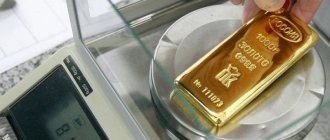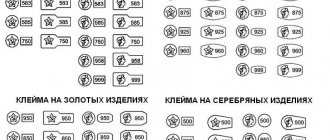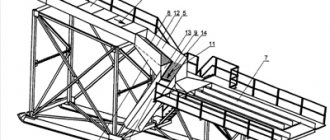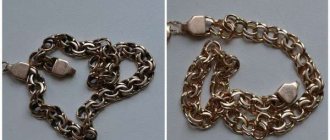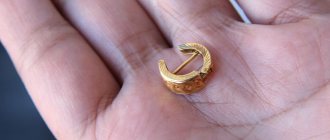Where does the gold in phones come from and where is it contained?
Noble metals are indeed found in mobile phones, but the answer to the question of how much gold is in the device depends on the model. This is explained by the fact that the precious metal has good properties, low resistance, and durability. In detail, this substance does not react or interact with other materials, and does not change the accuracy of operation and characteristics over time. Therefore, the use of gold, even in small quantities, is truly justified.
Gold in mobile phones
In addition to mobile phones, the precious metal can be found in sufficient quantities in radio components and computer mechanisms. It is even present in SIM cards that are inserted into the phone. Gold, used for technical purposes and not for jewelry, has a high standard, so the question of the benefits of extracting the substance from an unnecessary gadget is interesting.
It is necessary to take into account that gold was used in older phone models in larger quantities, while in modern smartphones it is practically absent. The phones also contain:
- copper - up to 15 grams;
- ceramics;
- silver - up to 0.25 grams;
- cobalt.
Up to 0.024 grams of gold can be obtained from one model, most often from circuit boards and contacts. A particle of precious metal can be found in all conductive parts. The figure seems quite miniscule, but if you take up to 40 phones, then this is exactly how much precious metal is mined from one ton of processed ore. In addition, the price of gold per gram today makes one think about this method of enrichment, since up to 100 rubles can be extracted from one faulty model. This figure only takes into account gold, but there are other elements as well.
What precious metals are in your smartphone?
According to some studies, the “stuffing” of many modern equipment may include such elements as:
- Platinum
- Gold
- Silver
- Palladium
- Lithium
- Gadolinium
- Niobium
- Gallium
- Terbium
Reference! If we talk about the material called lithium, it is mainly extracted from rechargeable batteries, which are equipped with virtually every smartphone today.
Lithium, although not a precious metal, is still quite valuable, and at specialized enterprises it is often extracted from used batteries.
Only small amounts of gold can be found in the circuit boards of most modern phones, tablets and laptops today. With silver, although it is much cheaper than precious “aurum”, the situation is different: it is used in the production of circuit boards in much larger quantities, so its extraction from circuit boards is completely justified.
As for the extraction of lithium and other rare earth materials from used batteries, it justifies itself exclusively on an industrial scale.
Methods for extracting precious metals from mobile phones
You can find devices either at home, as well as from friends and acquaintances, or advertise the purchase of old models. Moreover, non-working devices will do. Since the presence of gold is really not a myth, you can start extracting it and visually find out how much gold is contained there. First you need to disassemble the phone. The battery does not matter in this matter; it must be disposed of or used for other purposes.
Cellular device parts are cleaned using strong reagents, and future gold goes through the purification stages of dissolution and precipitation. Or the galvanization method is used, in which the gold is separated under the action of electrodes. The second method is more effective, faster and safer, but galvanization is an expensive process, unlike the use of reagents.
Not only ordinary people and those who want to earn money, but also scientists are engaged in mining gold from phones. They are the ones who fight for a clean environment, and it doesn’t matter how much gold ends up in the phone. Thus, Swedish recycling companies are actively involved in the extraction of precious metals. Up to 300 grams of gold and a kilogram of silver are extracted from a ton of devices, which can significantly reduce the amount of unnecessary waste and make production waste-free.
The companies report that the money raised in this way will go to the needs of developing countries and people living below the poverty line. The funds will also be used to protect the environment. The devices have already begun to be accepted at cellular communication stores and handed over for recycling. On such a scale, this is a really profitable business, and people now know how much gold is in a cell phone and where they can put their old phone instead of throwing it in the trash.
Of course, if you do this alone, then even if you buy several kilograms of phones, the business will not be profitable; on the contrary, it will become labor-intensive and pointless. If you are already recycling old devices, it is better to coordinate and organize actions throughout the country and use expensive equipment to extract the precious metal.
How many precious metals are in a smartphone?
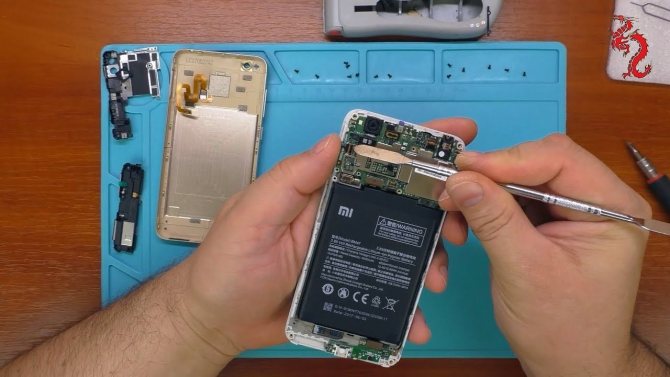
Anyone who takes the time to carry out simple calculations will understand that one phone contains approximately 0.025 grams of precious material. Converted to rubles, it turns out that you won’t be able to get rich by mining gold from a couple of old smartphones. However, the extraction of gold and other valuable materials from used equipment becomes quite profitable if it is put on stream at industrial enterprises. Many modern enterprises for processing recycled equipment receive about 150 grams of gold from one ton of printed circuit boards, which is already a considerable figure, and thus allows the enterprise to gain profit.
Reference! As already mentioned, there is much more silver in modern phones than gold. On average, one enterprise can extract no less than one and a half kilograms of pure silver from a ton of technical scrap.
What is the problem?
Since these two billion users upgrade their smartphone every 11 months on average, that means the old one gets put in a drawer and forgotten or thrown away. Barely 10% of them are recycled, extracting and reusing precious components. This is a real gold mine that runs in closets, in drawers, in landfills. In an era when the consumption of certain resources exceeds all imaginable and unimaginable volumes, it makes sense, both from an economic and environmental point of view, to avoid storing such valuable substances.
How much gold is in a regular push-button telephone?
It’s worth saying right away that there is very little gold in the phone – 0.024 grams. But if you recycle a ton of circuit boards from push-button mobile phones, you can get almost a quarter of a kilogram of gold.
For those who like to obtain gold from radio components using the old-fashioned method, it will be difficult to profitably obtain the valuable metal from mobile phones.
Sell gold
If a handful of old Soviet capacitors, which can easily be dissolved in a jar of hydrochloric acid, yielded several grams of the noble metal, then to obtain the same amount you will have to dissolve thousands of microcircuits from mobile phones in acid. It is much more profitable to recycle radio components with precious metals than microcircuits - this is the law of the market.
Of course, it is much easier to get access to a large number of old mobile phones than to gain access to kilograms of Soviet capacitors and transistors.
Therefore, many companies that buy old electrical parts still prefer to take risks and buy tons of old mobile phones, since the benefits can be obtained more than from searching for and recycling that small number of Soviet “golden” capacitors that are still untouched.
What happens to these resources when the smartphone becomes obsolete?
If you've been thinking about owning your own small electronic gold mine, the microscopic amounts of gold in every smartphone will give you pause. But once you start thinking big, things become much more attractive: in one million mobile phones you can find 16 tons of copper, 350 kilograms of silver, 34 kilograms of gold and 15 kilograms of palladium.
The challenge is how to recover these minerals and materials safely and economically. Much electronic waste—including cellphones—is exported or dumped in countries like China, where poorly paid workers and children disassemble electronics, often using hazardous chemicals to remove the valuable component. The Chinese city of Guiyu has earned the dubious honor of being the largest e-waste dump in the world. Residents of the city are experiencing terrible health problems due to contamination of soils, rivers and air with mercury, arsenic, chromium and lead.
Even e-waste that is returned to the country of origin poses a problem. In Australia, for example, recycling e-waste still involves industrial smelting, which is expensive and environmentally harmful.

What precious metals are found in regular push-button mobile phones?
Experts say that the older a mobile phone model is recycled, the more precious metals can be recovered from it.
Sell gold
Technologies are constantly developing and there is less and less need to use radio components with precious metals to create more advanced microelectronics.
If you take push-button mobile phones that were “new” five or ten years ago, then you can find the largest amount of gold, silver, palladium, tantalum and other valuable metals in them.
We should not forget that copper is becoming more expensive every year. Therefore, old mobile phones are recycled in order to get more copper out of them. On average, according to scientists, one ordinary mobile phone with buttons contains up to 10 grams of pure copper.
In order to obtain the same amount of pure copper, a ton of ore must be mined, then it must be purified and then the copper must be isolated in its pure form, which is released using active and dangerous chemicals. It is much easier and more environmentally friendly to recycle old mobile phones so that you can get the right amount of copper.
But it is worth paying attention to other precious metals in push-button mobile phones. We are talking about silver and palladium. The latter metal is one of the most expensive and is certainly valued higher than gold. Therefore, palladium in a regular push-button mobile phone is several times less than gold - about 0.009 grams. There will be more silver - 0.25 grams. This metal is famous for the fact that it perfectly conducts electric current and in microelectronics it is often used instead of the more expensive gold and palladium.
How to get gold from a mobile phone?
The technology is quite simple, but it is worth observing safety requirements. When working with concentrated hydrochloric acid, you only need to wear a mask and goggles, and you must wear special gloves on your hands.
You will need to pour hydrochloric acid into a glass container and fill it with broken microcircuits from mobile phones. The cases do not need to be thrown into hydrochloric acid, since there is nothing valuable in them!
Sell gold
After a week of chemical fermentation, there will be nothing left of the microcircuits, and grains of gold will remain at the bottom.
Do not forget that all components of a mobile phone - iron, copper, tin, even silver - react with strong hydrochloric acid. Only gold and palladium do not participate in the reaction and precipitate. ◄ Back to news
